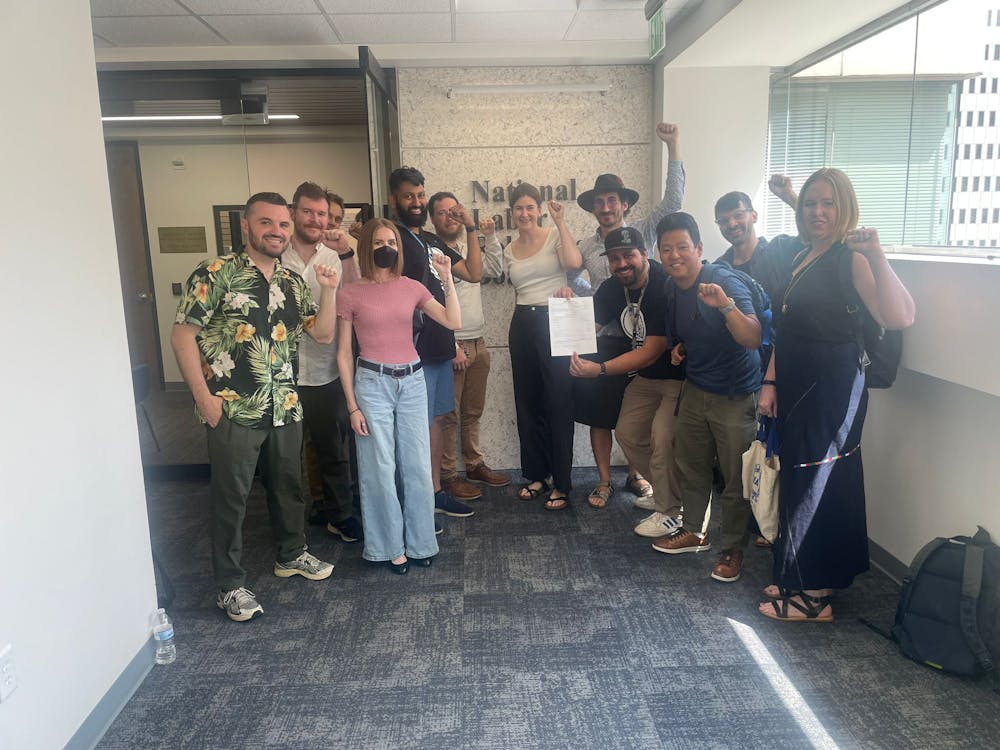The University’s Student Outreach Resource Center (SOURCE) hosted a panel entitled The History and Institutions of Racism in Baltimore as part of the organization’s Baltimore Week, an initiative aimed to celebrate the city’s community. The event took place on Thursday, Oct. 6 on the east Baltimore campus. The three panelists, Steven Ragsdale, Elizabeth M. Nix and Matthew Crenson, spoke for an hour on the racism within Baltimore, placing recent local events in a global context and discussing the history of racial tension both in the city and in the U.S.
Steven Ragsdale, a historian and Baltimore native who has focused his research on local healthcare disparities, spoke about how Baltimore is behind in healthcare compared to the rest of America.
“There’s not a lot of ways to get direct healthcare. We have more typhoid, it’s a water based city. We used to have some of the biggest rats you’d ever want to lay eyes on. [Baltimore] boasts one of the highest HIV rates in the country,” Ragsdale said. “Black men in the city have one of the highest prostate cancer rates in the country. From an environmental standpoint, we still have a lead paint problem. We have a host of health problems that come from Baltimore being an industry city.”
He elaborated on how its shortcomings in health care directly impact the black community.
“At one time, Baltimore only spent about half what was necessary in public health and depended on private government issues to help manage population sickness,” Ragsdale said. “It created a social dynamic where when African Americans were able to get healthcare, it was strictly through one vehicle. And that was the emergency room.”
Elizabeth M. Nix, associate professor of history at the University of Baltimore, spoke about the problems in education that she has observed through her young children who attend public school in the city.
Nix talked about how white Americans often have the option to attend schools with predominantly white students, either by attending private schools or relocating to the suburbs. According to Nix, this leads to segregation in education which is still seen today.
“[Catholic schools] offer options for the white populations. And we were starting to talk about white flight, middle class flight. White people just move out of neighborhoods,” she said. “In most cases, the racial switchover of an entire neighborhood from 100 percent white to 95 percent black takes place in less than eight-10 years here, because there’s so many suburbs that whites can move into. They stay in the area, but they don’t stay in the city.”
The third member of the panel, Professor Emeritus in the University’s political science department Matthew Crenson, has published several works that analyze the ideological flaws of the political system of the United States. Crenson studies urban government and American political development.
Following the panel, Bradley Alston, the directory of community relations at The Y of Central Maryland, thought that the discussion’s presentation was very appropriate.
“I always like for conversations to be informed and open and honest,” Alston said. “I think that those we have going forward should be like this so that we now what the past is honestly to discuss what the present is.”
Freshman Grace Troy agreed that it is important for conversations about race relations and racial tension to be informed and open.
“Both sides need to be informed when talking about solutions to the problem, approaching it from an educated standpoint and making sure that the information is available to both sides,” Troy said.
She identified that the discussion should be more accessible to the public. Despite being open to the public, the panel was hosted by the University’s SOURCE and the audience seemed to be almost exclusively undergraduate and graduate students.
“It wasn’t really open to the whole community,” Troy said. “You get a skewed view, the educated person’s view. While that is an important first step in getting the issue out there, it needs to be a generally more inclusive discussion.”
Other members of the audience expressed similar frustration with the venue of the discussion. Lauren Hosterman, a first year doctoral student, acknowledged the importance of speaking about the issues but would like to see more effective action.
“It seems like we’re doing a lot of talking,” Hosterman said. “Not that this isn’t important, but there needs to be more of a collaborative effort to actually do things.”
Hosterman spoke to the way action can begin to take place on the ground level.
“The grassroots movement leads to policy change,” she said. “Speaking from the voices of the people, you’re coming from that community and you feel empowered to speak out and you have other people standing there with you. That makes the biggest changes.”
Troy agreed on community change but does not think it will be enough to enact policy change.
“It needs to be both on the ground level and action from above that meet in the middle,” she said. “General opinion of the people will hopefully follow legislation, but it doesn’t always, so it needs a common ground in the middle.”
Several members of the audience identified the importance of understanding personal experiences before engaging in an interactive effort to find solutions.
“Unfortunately, many people have had to deal with racism in their life,” Troy said, “So past experience is going to dictate how they approach the current issue. If you have lived in a community where there’s always been racism and discrimination by the police, you’re going to have distrust of the police force. Personal experience definitely plays a strong role in how race relations go about today.”




